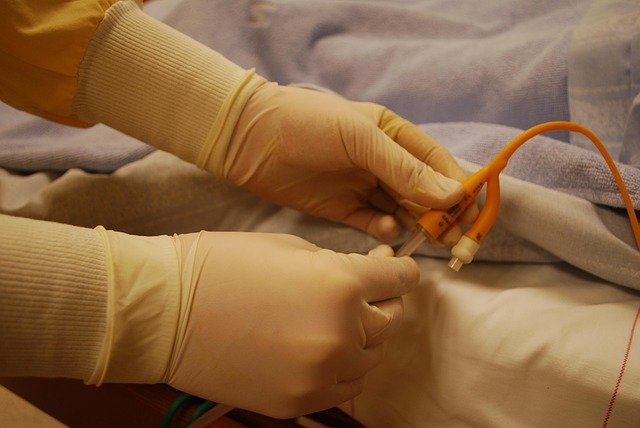Gastric balloon guide
A gastric balloon is a non-surgical weight loss procedure that involves placing a silicone balloon inside the stomach to help people lose weight by creating a feeling of fullness. This temporary intervention has gained popularity as an alternative to more invasive bariatric surgeries, offering a reversible approach to weight management for individuals struggling with obesity or significant weight concerns.

What is a Gastric Balloon?
A gastric balloon, also known as an intragastric balloon, is a soft silicone device that is temporarily placed in the stomach to aid weight loss. The balloon takes up space in the stomach, which helps patients feel full more quickly when eating and reduces overall food intake. There are different types of gastric balloons available, including those filled with saline solution or gas, and they typically remain in place for six months to one year.
The procedure involves inserting a deflated balloon through the mouth and into the stomach using an endoscope, a thin, flexible tube with a camera. Once positioned correctly, the balloon is filled with either sterile saline solution or gas, depending on the type used. This creates a physical barrier that limits the amount of food the stomach can hold comfortably.
How Does a Gastric Balloon Work?
The gastric balloon works through two primary mechanisms: restriction and satiety. The physical presence of the balloon in the stomach reduces the available space for food, creating a mechanical restriction that limits meal sizes. Additionally, the balloon triggers hormonal changes that affect hunger and satiety signals, helping patients feel satisfied with smaller portions.
When food enters the stomach, the balloon creates pressure against the stomach walls, sending signals to the brain that indicate fullness. This process happens more quickly than normal, encouraging patients to eat smaller meals and develop healthier eating habits. The balloon also slows gastric emptying, meaning food stays in the stomach longer, prolonging the feeling of fullness between meals.
The effectiveness of the procedure depends significantly on lifestyle changes and dietary modifications. Patients typically work with nutritionists and healthcare teams to develop sustainable eating habits and exercise routines that support long-term weight management even after balloon removal.
Is Gastric Balloon Safe?
Gastric balloon procedures are generally considered safe when performed by qualified medical professionals, though like any medical intervention, they carry certain risks and potential side effects. The procedure is minimally invasive compared to surgical weight loss options, as it does not require incisions or permanent alterations to the digestive system.
Common side effects during the initial adjustment period include nausea, vomiting, abdominal cramping, and feelings of fullness. These symptoms typically subside within the first week as the body adapts to the balloon’s presence. More serious but rare complications can include balloon deflation, migration, or blockage, which may require immediate medical attention.
Candidates for gastric balloon procedures typically include adults with a body mass index between 30-40 who have not achieved success with traditional diet and exercise approaches. The procedure is not suitable for everyone, and thorough medical evaluation is essential to determine eligibility and identify any contraindications.
Cost Considerations and Provider Options
The cost of gastric balloon procedures in Nigeria varies depending on the healthcare facility, type of balloon used, and included support services. Private hospitals and specialized weight management clinics typically offer these procedures, with costs ranging from approximately ₦1,500,000 to ₦3,500,000.
| Provider Type | Estimated Cost Range | Services Included |
|---|---|---|
| Private Hospitals | ₦2,000,000 - ₦3,500,000 | Procedure, follow-up care, nutritional counseling |
| Specialized Clinics | ₦1,500,000 - ₦2,800,000 | Balloon insertion/removal, dietary support |
| Medical Tourism Options | ₦1,200,000 - ₦2,500,000 | Complete package with accommodation |
Prices, rates, or cost estimates mentioned in this article are based on the latest available information but may change over time. Independent research is advised before making financial decisions.
Recovery and Expected Results
Recovery from gastric balloon placement is typically straightforward, with most patients returning to normal activities within a few days. The first week requires dietary adjustments, starting with clear liquids and gradually progressing to solid foods as tolerated. Regular follow-up appointments with healthcare providers are essential to monitor progress and address any concerns.
Weight loss results vary among individuals, but patients typically lose 20-30% of their excess body weight during the balloon placement period. Success depends heavily on commitment to lifestyle changes, including dietary modifications and increased physical activity. The most successful patients use the balloon period to establish sustainable habits that continue after removal.
The temporary nature of the gastric balloon means that maintaining weight loss requires ongoing commitment to healthy behaviors. Many healthcare providers offer comprehensive programs that include psychological support, nutritional counseling, and exercise guidance to maximize long-term success.
A gastric balloon represents a valuable option for individuals seeking effective weight loss intervention without permanent surgical changes. While the procedure offers promising results for appropriate candidates, success ultimately depends on comprehensive lifestyle modifications and ongoing medical support. Consultation with qualified healthcare professionals is essential to determine if this approach aligns with individual health goals and circumstances.
This article is for informational purposes only and should not be considered medical advice. Please consult a qualified healthcare professional for personalized guidance and treatment.




